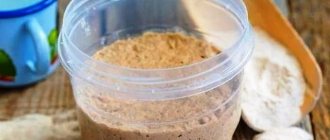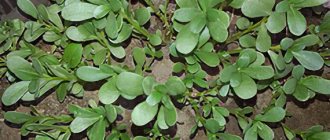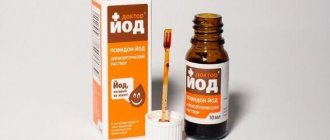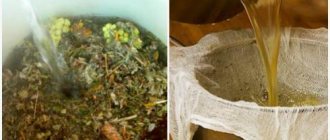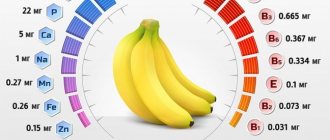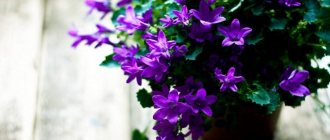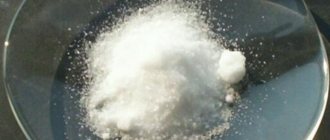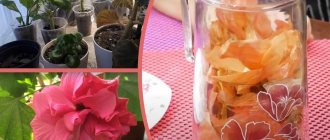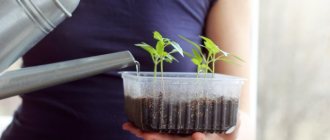Yeast feeding - as a fertilizer for plants
Yeasts are the simplest single-celled fungi. Their composition itself lacks nitrogen, phosphorus, potassium, that is, those important microelements necessary for normal plant growth. But once in the soil, they begin to affect the organic residues that are in the ground. They begin to process them, thereby decomposing these residues faster and better. When decomposed, they release large quantities of nitrogen and phosphorus into the soil.
Plants accordingly absorb the increased content of these elements and actively develop. Nitrogen helps build up vegetative mass, and phosphorus promotes better development of the root system. Here is the effect of their use. That is why such fertilizer is considered a growth stimulator. And it’s not for nothing that the following expression appeared: “It’s growing by leaps and bounds.”
Properties and features of the use of yeast as fertilizers
The properties of yeast starter used for baking baked goods are known to bakers, cooks and many housewives. The product is used for preparing various types of baked goods: bread, buns, pancakes and pies. Thanks to the special properties of active microorganisms, yeast dough increases in volume, becomes light and is saturated with oxygen and carbon dioxide. When used in the garden, the product exhibits similar properties, having a beneficial effect on plants and soil.
On a note. According to reviews, the effect of the yeast solution becomes noticeable 10-12 days after the first use. Plants begin to grow more actively, the number of shoots increases, and the root system strengthens.
What properties and characteristics do yeast exhibit as fertilizers?
Feeding plants with yeast is as follows:
- the product is diluted according to one of the suitable recipes;
- on a warm day, water certain types of plants;
- under the influence of environmental temperature, yeast microorganisms begin to manifest their properties, affecting the soil (they process organic matter, releasing nitrogen, auxin, thiamine, and B vitamins during their activity);
- Plants receive useful substances through the root system, cell growth increases, and their immunity increases.
Important! Yeast is used in the form of an aqueous solution, and not in a concentrated state. They are not suitable for all types of plants.
Yeast fertilizers have a positive effect on indoor and vegetable crops as follows:
- roots grow faster, the number of lateral segments increases;
- seedlings take root better when transplanted;
- cuttings actively build up the root system and grow faster;
- the soil becomes more nutritious, saturated with nitrogen and potassium;
- the resistance of vegetables and flowers to the effects of adverse factors and diseases increases;
- tomatoes tolerate the picking procedure better and do not stretch in greenhouse conditions.
How to use yeast to feed plants in the garden
Fertilizer has a lot of useful properties, namely:
- Stimulates vegetative growth of plants;
- Improves the soil, that is, enriches it with beneficial bacteria;
- The root system becomes more powerful;
- The endurance of plants improves and their immunity to adverse weather conditions increases;
- The survival rate of any seedlings improves.
Yeast requires warm temperatures for normal functioning. Therefore, fertilizing is used on warm days when the soil is sufficiently warm. If the air temperature decreases, the ground temperature also decreases accordingly, just like in rainy weather. Beneficial mushrooms will not work in such an environment, so the use of fertilizer in such weather conditions will be completely useless. But on warm, hot days, feeding warm soil will be just the thing.
And one more important point. Keep in mind that potassium and calcium must be added to the soil. Because when yeast is added, these elements are absorbed from the soil. As a result, the plant will lack these elements. And the simplest remedy that will help compensate for the loss of these elements is wood ash, since it contains both potassium and calcium.
Fertilizing indoor plants with yeast
Indoor plantings deprived of natural nutrition, thanks to yeast feeding, receive a lot of useful components that stimulate their growth:
- phytohormones that have a beneficial effect on plants only when necessary and are responsible for its adaptation to the environment;
- auxins, which contribute to the formation of a strong root system of indoor plants; B vitamins, which affect the growth and condition of stems and leaves;
- cytokinins, actively involved in cell division of houseplants.
For feeding, you can use both dry and fresh yeast. Fertilizers help to activate the activity of microorganisms in the soil, and therefore excessive fertilization can destroy plants. Fertilizers are recommended to be used in diluted form for a limited period of the year - from May to August.
How often to water with yeast nutrition
Yeast feeding is carried out 2 times per season, no more, and only in the early stages of plant growth. It is during this period that such fertilizer is very necessary for development and will be beneficial.
The first application is carried out after the seedlings have been planted in a permanent place, and they have taken root and started to grow. During this period, seedlings for further growth urgently need nitrogen and phosphorus to build a powerful root system. It has been noticed that this helps to grow the root system 2 times more than without it or when using other fertilizers. The plants themselves look stronger because they absorb increased nitrogen content from the soil, microelements, and organic iron. And such plants will be much stronger and healthier.
The second application is carried out after 2 weeks. It would be enough. Further use will no longer be effective, since during the fruiting period phosphorus and potassium are needed more than nitrogen. The main thing here is not to overdo it, otherwise such fertilizing will give lush greenery.
Before applying fertilizer, the plants are first watered with water. The earthen lump should be moist so that the nutrients are better absorbed by the roots.
Time to apply yeast fertilizers for different plants
Yeast can be fed to all potted and tub crops. The best time to apply growth-stimulating fertilizers to indoor plants is the beginning of the growing season.
Those plants that are in a dormant period in winter, for example, pelargonium, gloxinia, caladium, cypress or fuchsia, begin to be watered with mash from the beginning of spring. The interval between yeast feedings is at least 3 weeks. Completely stop fertilizing flowers in mid-autumn.
But crops that actively bloom in winter, for example, Schlumbergera, azalea, camellia, cyclamen, clivia, violet and hippeastrum, are fertilized with yeast all year round. But the best time to fertilize such flowers with yeast is from November to March. The mash is used at the root every 2 weeks, always on damp soil.
Which plants love yeast feeding?
A variety of plants respond well to this feeding.
- All vegetables, but cucumbers, tomatoes, and peppers react especially rapidly;
- Fruit trees, shrubs, strawberries;
- Houseplants.
But be careful: feed the plants two, maximum three times per season:
- In spring to stimulate vegetation;
- In the summer before the period of active fruiting;
- And during the recovery period, that is, after fruiting (but this is not necessary).
Baker's yeast fertilizer recipe (universal)
It is best to use water that has been left standing for at least 4 days, and then frozen and completely defrosted. You can also collect a jar of snow outside and wait for it to melt. After the ice or snow has melted at room temperature, the water is slightly heated and used to prepare the fertilizer.
Dilute 10 g (1/10 of a standard 100-gram packet of yeast) of the product in 1 liter of water heated to a temperature of 35-38. Add a teaspoon of sugar, stir and place the container on the radiator for several hours. Mix the resulting mash again and use it to water all indoor flowers that are not in the dormant period.
We remind you that, like any other liquid fertilizer, yeast is applied exclusively on wet soil. To do this, all the plants that you planned to feed must be watered as planned in the evening. And in the morning or the next afternoon, moisten the earthen ball in the planting containers with a yeast solution.
In addition to deciduous and beautifully flowering indoor flowers, all seedlings are fertilized with yeast infusion. The introduction of beneficial fungi into the soil when watering seedlings stimulates the growth and development of the roots and above-ground parts of seedlings, which is especially important when they are in greenhouse conditions, for example, on a windowsill or insulated loggia.
Good luck to you in indoor floriculture and growing seedlings on the windowsill!
Yeast dressing for tomatoes, cucumbers, strawberries, cabbage - recipe
The recipe for preparing stock and working solutions is the same for all types of plants. And the result after applying fertilizer will also be the same everywhere. In just a few days, your plants will come to life and turn green.
Pressed yeast recipe
We dilute 1 small pack of pressed yeast (100g) in 10 liters of warm water. You can first dilute it in a small amount of water (3-5 l), add 3 tbsp. l. sugar, stir everything thoroughly to form a homogeneous solution. Then we put the resulting solution in a warm place for a day so that the fungi wake up and become more active. After a day, add the volume of the resulting mash to 10 liters with warm water. This will be the mother liquor.
We prepare a working solution from the mother liquor. To do this, dilute 1 liter of mother solution in 5 liters of water. Don't forget that the water should be warm. We water the plants with the resulting solution at the root level at the rate of 1 liter per plant.
How to prepare a solution from dry yeast
If you don’t have pressed yeast, you can prepare a mother liquor of their dry yeast. For this purpose, 1 sachet (10 g) is first diluted in a small amount of warm water (0.5-1 l), 2-3 tbsp is added. l. sugar, mix everything thoroughly. And in the same way, the dough is removed for fermentation overnight in a warm place. Then the resulting starter is added to 10 liters of water.
For work, the mother liquor is diluted at a ratio of 1:5. Before starting work, the soil is spilled with water, sprinkled with ash, and then fertilized at the rate of 1 liter per plant.
Recipes
Experienced gardeners and flower growers talk about how to dilute yeast for feeding. Everyone has their own ways. The difference is mainly in the amount of water and the type of yeast used.
| Purpose | Preparation | Application |
| For garden roses, petunias, chrysanthemums, peonies | 10-20 g of granulated baker's yeast are diluted in a liter of water with two tablespoons of sugar. Leave for 2-3 hours, then pour into a bucket of water. | Water the flowers in the morning or at sunset (no more than 1 liter per root). |
| For vegetables | The pressed briquette is crushed into a bucket of warm water. Stir, add a few tablespoons of sugar. They insist for a day. | Water peppers, cabbage, carrots, cucumbers, and tomatoes on a warm day (at least 500 ml at the root). |
| For garden and vegetable crops | In a barrel, mix a bucket of green (freshly cut) grass with the remains of stale bread (preferably rye) and 0.5 kg of pressed raw yeast. Pour 10 liters of warm water. Let it brew for 2-3 days. | Before watering, the mixture is diluted with five buckets of warm water. Used for watering flowering shrubs, roses, and tomatoes. |
| For tomatoes and cucumbers | A bucket of crushed fresh nettles, a shovel of cow dung, a liter of wood ash, 100 g of pressed yeast (a small briquette), and a liter of fermented milk are poured into the barrel. Pour in a bucket of warm water and stir. Cover with a black bag. | The mixture is infused for a week, then diluted with water in a ratio of 1 to 5, and watered with vegetables before flowering. The composition is not used for seedlings. |
How long should fermented sourdough be stored? Not for long - no more than a day. Afterwards, the effectiveness of the composition decreases.
How to prepare yeast fertilizer for seedlings
But you can not only feed adult plants in the garden. If seedlings of tomatoes, peppers, and eggplants do not grow well, feed them with yeast as well. The cooking recipe is as follows.
For 3 liters of warm water, take 1 small packet of dry yeast and 2 tbsp. l. granulated sugar. Mix everything thoroughly in the jar and leave the solution to ferment in a warm place for a day. After a day, dilute 1 liter of the prepared solution in 10 liters of water, or 0.5 liter in 5 liters of water.
When applying fertilizer, we always water the plants first so that the earthen ball is moist. And only after this we water the seedlings at the roots with the resulting solution, trying not to get it on the leaves of the seedlings. Feeding is carried out once, and that will be enough. The next one is carried out after the seedlings have been planted in a permanent place.
An alternative to feeding indoor flowers with yeast
Even if there is no yeast in the house, but the housewife is keen on preparing medicinal raw materials, then in the aromatic reserves there will certainly be an excellent replacement - hop cones. It will take a little more time to prepare treats for indoor beauties, but the result will delight the happy owner of the flowers.
For one feeding you will need:
- 260 gr. hop cones (fresh or dry);
- 35 gr. Sahara;
- 780 ml. water.
Place the hop cones in a small container and fill with hot water. Put on fire, bring to a boil. Do not remove the container from the stove, continue to cook for half an hour. Strain the liquid through a thick cloth, add sugar. After cooling slightly, the mixture is ready for use. Dilute with 3 liters of water, add to each plant, being careful not to get the liquid on the leaves (especially for pubescent, tender leaves).
Sowing potato seeds for seedlings
Why don't violets bloom?
Why do Chlorophytum leaves turn yellow?
For maximum effect, feeding indoor plants with yeast must be supplemented with calcium and potassium - eggshell powder and wood ash.
We hope our tips on fertilizing indoor plants with yeast will be useful to you. It is up to you to decide which fertilizers to use for your indoor plants. Feeding indoor flowers with a certain substance or product has its own characteristics and rules of application. The main thing is to apply fertilizers in moderation and then your indoor flowers will delight you with their lush blooms, and all your neighbors will envy you.
